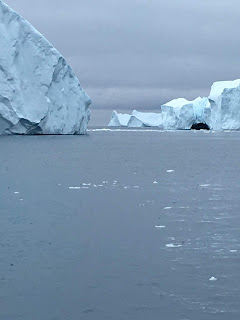Last year I joined a Voyager group called Easy Riders and biked with them on the Tucson loop once a week nearly all winter. My maximum distance was about 18 miles. I noticed my fitness improving and always felt great at the end of the ride. But again, I didn't ride a single time all summer in Washington.
Then my friend Ellen and I decided it might be fun to plan a bike and barge trip in Europe. We wanted our choice to be easy rides, a small vessel, and of two weeks' duration. I asked my husband Art if he wanted to go, and - to my great surprise - he said yes. Here's what we'll be doing next May:
https://www.tripsite.com/bike-boat/tours/amsterdam-to-bruges-via-maastricht-14-days
We decided to rent e-bikes for the trip. They cost extra, but with distances of 30 miles a day or so, we didn't want to arrive at the barge each evening exhausted and gasping for breath. We decided we should get some e-bike practice before the trip, though.
Ellen and I rented a couple of Pedego e-bikes in Tucson last May on a ride-two-hours-for-the-price-of-one deal. We felt clumsy and intimidated for about the first two minutes, and then it was exhilarating and wonderful. We rode nearly 30 miles in two hours with not much effort, though we were tired when we dismounted at the end of the ride. Take a look at the Pedego bike.
https://www.pedegoelectricbikes.com
They are fun to ride but pricey, so we decided to look around at other brands. Rad City bikes were a better price for us. Art and I looked at them in Seattle, where they're made, and suggested that Ellen try one out in Arizona.
https://www.radpowerbikes.com
She made the two-hour drive to Scottsdale, rode a Rad City bike, but decided on another brand in the store instead. It's an Espin.
https://www.espinbikes.com
Ellen rode her Espin for a month and raved about it in every email. So two days after I arrived in Aizona, we drove with her to Scottsdale and rode an Espin. We bought two of them that day.
On our first day on the Tucson loop, Ellen and I rode 18 miles with ease.
After my first day on the loop, I gave my old bicycle to my friend Shirley. I was that sure the Espin was for me. I am still sure!
Here is my bike, last week on the trail, with Ellen and her ride.
,

When we drive back to Seattle, our bikes will go with us. They will be fabulous in our hilly neighborhood.
Here's what I know about e-bikes:
- They're heavier than regular bikes because of the motor and the battery. Our Espins weigh 47 pounds; others weigh more.
- They cost more than regular bikes. Our Espins were $1700 each, and that is close to the low end.
- You buy according to what you want to do with the bike. We don't want to ride off road. We don't want to go more than 25 miles an hour. We do want to mount and dismount easily, so we bought a step-through version.
- The pedal-assist feature means the motor doesn't engage unless you are pedaling. There are several levels of pedal assist. The lowest level is where I usually ride. If I'm going less than eight miles an hour, I get a quiet, subtle boost in speed; that happens when I start up and when I'm going up an incline. If I stop pedaling, the motor goes off.
- The throttle feature - which the Espin has - eliminates my need to pedal. Not all e-bikes have the throttle feature, and it wouldn't be a requirement for me.
I was 71 yesterday. I love this bike!


























